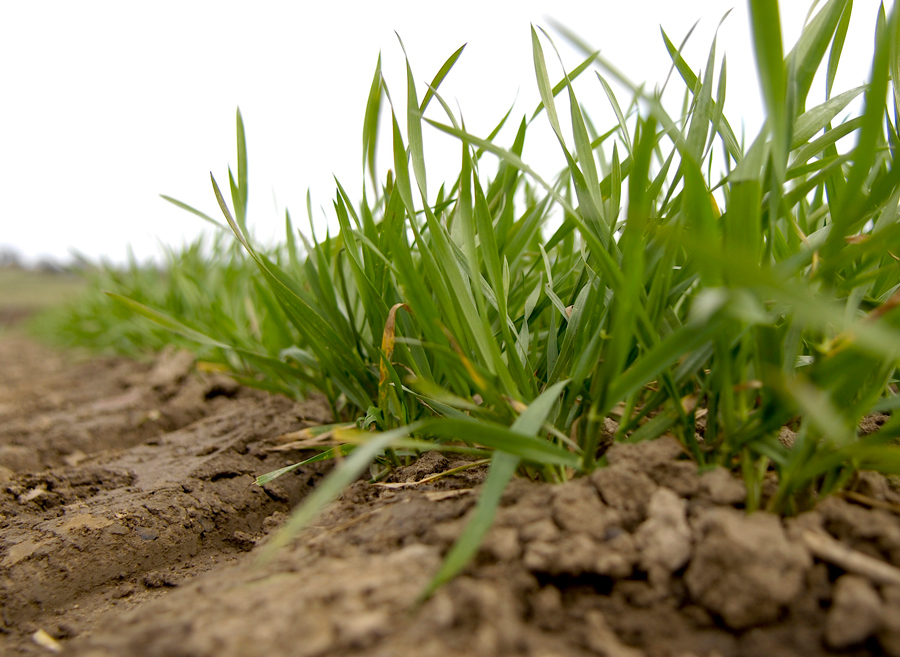Winter wheat crops are full of potential
24th April 2019
Up and down the country winter wheat crops are looking well, full of potential which will need looking after and the focus of growers’ attention is now the T1 spray timing.
Up and down the country winter wheat crops are looking well, full of potential which will need looking after and the focus of growers’ attention is now the T1 spray timing.
Professor of Applied Plant Pathology at SRUC, Fiona Burnett said, “I think, broadly speaking, growers know that at T1 they are aiming for leaf 3 fully emerged on the main tiller. However, I have found that the error tends to be going early.
It is crucial to get the T1 timing right to try to minimise that gap between T1 and T2. This is all about getting the flag leaf spray right as that is the really responsive one and the one where the chemistry is not as eradicant as it used to be, so timings have to be more precise. You are hoping there are three and at most four weeks between the T1 timing and T2.”
BASF Agronomy Managers have been looking at crops across the UK, in Scotland, Scott Milne said,” If you get T1 right then everything else will follow on. If you allow disease in at T1 then it is very difficult to claw it back especially if you get a wet spell.
Disease spreads readily by rainsplash from leaf 3 up through the crop. T1 is when growers should be using Adexar (fluxapyroxad + epoxiconazole) as they are the strongest actives against both Septoria and Yellow Rust. The key is to keep your bottom clean at T1.”
In Yorkshire, Rory Galloway said, “The crop has to be protected for the next four weeks, you’re not working on what the weather is now or what it has been. You have to plan as an insurance policy.
The wheat is all looking pretty good here, at GS 31, with leaf 3 approximately 75% emerged in some of the earlier varieties. Disease wise there is Septoria in the bottom of the crop but there is less Yellow Rust about now than there was two weeks ago.”
Prof. Burnett said “Septoria is the main target and the main issue; broadly speaking there is plenty out there. The disease was there in the back end so it is not a particularly low pressure year for Septoria.
We are at the stage where lower leaves tend to die off and superficially crops tend to look better but it has been wet in some parts of the country and we know that the disease is there, it’s all about the weather from here on in.”
In the south of England Andrew Clune said, “Septoria is bubbling away in the bottom of crops. I think the idea of swapping out SDHIs at T1 is now rapidly losing favour as we have had quite a lot of rain in the last 7 days.”
Across in East Anglia however, conditions are drier than usual. Matthew Keane said, “We’ve had enough rain to keep Septoria going but it’s been patchy so some crops have taken up nitrogen and those crops look good, however, where it hasn’t rained crops are starting to look hungry. Yellow Rust is more of a concern at the moment; especially if the T0 has been compromised,however, at T1 a well timed SDHI/triazole combination will tidy it up, and, if growers are concerned they could also add Comet (pyraclostrobin).“
Professor Burnett said, “Eyespot is at higher levels than in previous seasons. Obviously it is very rainfall dependent with March, April and May rain a key feature of whether it drills through the outer leaves and stems.”
In the Cotswolds, Jonathan Helliwell said, “Eyespot is often not considered as high priority on lighter brashy land, but is something to consider especially when you look at the Recommended List; there are only 5 varieties with an eyespot rating of more than 5. It’s an inherent weakness of the majority of varieties in the ground.
If you are in a high eyespot risk scenario then 1l/ha of Tracker (boscalid + epoxiconazole) would be a good and very cost effective option to give the strongest eyespot and some Septoria cover, with Xemium as in Adexar also having good Eyespot activity for more moderate risk crops.
After many T0s were abandoned in light of lower perceived disease pressure, T1 needs to accommodate for the fact that we have some very forward leggy crops, Septoria remaining in the base, some Yellow Rust, and stem based browning where there is moisture on heavier land. With continued temperature fluctuations of 15+ degrees between day and night and sporadic rainfall, SDHIs at T1 remain our best Septoria protectants given unknown weather patterns until T2, and give some kick-back if needed. Rates should be maintained at the same level as last year. ”

